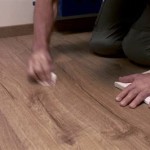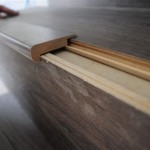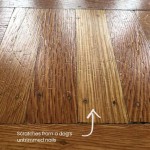How To Install Tile Flooring On Stairs: A Comprehensive Guide
Installing tile flooring on stairs is a significant home improvement project that can dramatically enhance the aesthetic appeal and durability of a staircase. While it can be a challenging endeavor, especially for a novice, careful planning, meticulous preparation, and adherence to proper installation techniques can yield professional-looking results. This article provides a detailed, step-by-step guide on how to successfully install tile flooring on stairs.
Phase 1: Planning and Preparation
Before commencing the actual installation process, thorough planning and preparation are paramount. This stage involves assessing the existing staircase, selecting appropriate tile, gathering necessary tools and materials, and meticulously preparing the surface for tiling. Overlooking any aspect of this phase can lead to complications and potentially compromise the final outcome.
1. Assess the Existing Staircase: The first step is to carefully examine the current condition of the staircase. Identify any existing damage, such as loose or rotting treads, crumbling risers, or uneven surfaces. Address these issues before proceeding further. Ensure that the staircase structure is sound and capable of supporting the added weight of the tile and mortar.
2. Choose the Right Tile: Selecting the appropriate tile is crucial for both aesthetic and functional reasons. Consider factors such as the style of the home, the desired aesthetic, the amount of foot traffic the stairs will endure, and the slip resistance of the tile. Porcelain or ceramic tiles are generally recommended for stairs due to their durability and resistance to wear and tear. Choose tiles specifically designed for stair treads, which often have a bullnose edge for safety and a finished appearance. Ensure that the tile selected meets or exceeds the safety standards for slip resistance in stair applications. Order sufficient tile to cover the entire staircase, plus an additional 10-15% for cuts and breakage.
3. Gather Tools and Materials: Having all the necessary tools and materials readily available will streamline the installation process and prevent delays. Essential tools and materials include:
- Tile saw (wet saw preferred)
- Measuring tape
- Pencil
- Level
- Square
- Notched trowel (size determined by tile size)
- Rubber mallet
- Grout float
- Grout sponge
- Buckets (for mixing mortar and grout)
- Safety glasses
- Dust mask
- Knee pads
- Thin-set mortar
- Grout
- Tile spacers
- Sealer (for grout and tile, if required)
- Painter's tape
- Construction adhesive (if needed for securing treads)
4. Prepare the Surface: Proper surface preparation is critical for ensuring a strong and lasting bond between the tile and the staircase. Begin by thoroughly cleaning the existing surfaces to remove any dirt, dust, grease, paint, or adhesive residue. Use a scraper to remove any loose paint or debris. Fill any cracks or imperfections with a patching compound designed for wood or concrete, depending on the staircase material. Lightly sand the surface to create a slightly rough texture, which will improve the adhesion of the mortar. Apply a thin layer of primer to the surface to further enhance adhesion and prevent moisture from penetrating the substrate. Allow the primer to dry completely according to the manufacturer's instructions.
Phase 2: Tile Layout and Cutting
Accurate tile layout and precise cutting are essential for achieving a professional and visually appealing result. Taking the time to carefully plan the layout and meticulously cut the tiles will minimize waste, prevent awkward gaps, and ensure a consistent and aesthetically pleasing appearance.
1. Plan the Layout: Before applying any mortar, dry-fit the tiles on each tread and riser to determine the optimal layout. Start with a full tile at the front edge of the tread (the bullnose edge, if applicable) and work backward. Determine where cuts will be necessary and plan for symmetrical cuts on either side of the tread, if possible. Consider the grout lines when planning the layout. Use tile spacers to maintain consistent spacing between the tiles. Mark the locations for all cuts on the tiles using a pencil. This dry-fitting process allows for adjustments and ensures a balanced and visually appealing layout.
2. Cut the Tiles: Using a tile saw (preferably a wet saw), carefully cut the tiles according to the marked lines. A wet saw provides clean, accurate cuts and minimizes dust. Wear safety glasses and a dust mask when cutting tiles. For curved cuts, use a tile nipper or a specialized cutting tool designed for curves. Apply painter's tape along the cut line to prevent chipping. Make multiple shallow passes rather than attempting to cut through the tile in a single pass, especially when cutting thicker tiles. After cutting each tile, check the fit on the corresponding tread or riser to ensure accuracy.
3. Mark and Cut Bullnose Tiles: If the chosen tile incorporates bullnose edges, proper installation is crucial for safety and aesthetics. If the factory finish is not already bullnosed, it will be necessary to cut the existing stair tread and apply bullnose tile to the edge to create a rounded, safer finish. Some bullnose tiles are designed as corner pieces, and require accurate, often angled cuts to fit them flawlessly into the corners of the stair treads and risers. Precise measurements and careful cuts are vital to ensure a seamless and safe finish to the staircase.
Phase 3: Tile Installation
The actual installation of the tile requires a systematic approach, attention to detail, and careful adherence to best practices. Proper mortar application, precise tile placement, and consistent grout line spacing are all critical for achieving a durable and aesthetically pleasing finished product.
1. Mix the Thin-Set Mortar: Prepare the thin-set mortar according to the manufacturer's instructions. Add water gradually while mixing with a trowel or mixing drill until a smooth, peanut butter-like consistency is achieved. Allow the mortar to slake (rest) for the recommended time (usually 5-10 minutes) before remixing and using.
2. Apply the Mortar: Using the notched trowel, apply a layer of thin-set mortar to the prepared surface of the first tread or riser. The depth of the mortar should be appropriate for the thickness of the tile and the size of the trowel notches. Hold the trowel at a 45-degree angle and create ridges in the mortar. Avoid applying mortar to a large area at once, as it can dry out before the tiles are set. Only apply enough mortar to set a few tiles at a time.
3. Set the Tiles: Carefully place the tiles onto the mortar bed, starting with the front edge of the tread. Press down firmly and twist slightly to ensure good contact with the mortar. Use tile spacers to maintain consistent spacing between the tiles. Use a rubber mallet to gently tap the tiles into place, ensuring that they are level and flush with adjacent tiles. Use a level to check the levelness of each tile and make adjustments as needed. Wipe away any excess mortar that squeezes out between the tiles.
4. Repeat the Process: Repeat the mortar application and tile-setting process for each tread and riser, working systematically from top to bottom. Pay close attention to the layout and alignment of the tiles, ensuring that the grout lines are consistent and straight. Periodically check the levelness and alignment of the tiles to prevent any cumulative errors. Allow the mortar to cure for the recommended time (usually 24-48 hours) before proceeding to the grouting stage.
Phase 4: Grouting and Finishing
Grouting fills the spaces between the tiles, creating a watertight seal and enhancing the overall appearance of the tiled surface. Proper grout selection, application, and cleaning are essential for achieving a professional and durable finish.
1. Choose the Grout: Select a grout color that complements the tile and the overall aesthetic of the staircase. Consider factors such as the amount of foot traffic the stairs will endure and the likelihood of staining when choosing the grout type. Epoxy grout is more resistant to stains and water damage than cement-based grout, but it is also more difficult to work with.
2. Apply the Grout: Mix the grout according to the manufacturer's instructions. Apply the grout to the tile surface using a grout float, working it into the spaces between the tiles at a 45-degree angle. Ensure that all grout lines are completely filled. Remove any excess grout from the tile surface with the grout float. Work in small sections to prevent the grout from drying out before it can be cleaned.
3. Clean the Tiles: After allowing the grout to set for the recommended time (usually 15-30 minutes), use a damp grout sponge to clean the excess grout from the tile surface. Rinse the sponge frequently in clean water. Avoid using too much water, as this can weaken the grout. Wipe the tile surface diagonally to avoid pulling grout out of the grout lines. Allow the grout to cure for the recommended time (usually 24-72 hours) before sealing.
4. Seal the Grout (Optional): Apply a grout sealer to protect the grout from staining and water damage. Follow the manufacturer's instructions for application and drying time. Some tiles may also require sealing, depending on their porosity.
5. Final Touches: Perform a final inspection of the tiled staircase, addressing any imperfections or inconsistencies. Install any necessary trim pieces, such as stair nosing or quarter round, to provide a finished and professional look. Apply caulk to any gaps between the tile and adjacent surfaces, such as walls or baseboards. Allow the caulk to dry completely before using the staircase.

Self Adhesive Vinyl Floor Planks On Staircase Installation

How To Tile Stair Risers With Jamin Mills

How To Tile Stairs Howtospecialist Build Step By Diy Plans

Stair Tiles Consider Design Safety San Diego Marble Tile
.jpg?strip=all)
Diy L And Stick Tile Stairs Makeover Dream Green

Installing Tile On Stairs Doctor
.jpg?strip=all)
Diy L And Stick Tile Stairs Makeover Dream Green

Stair Tiles Consider Design Safety San Diego Marble Tile

How To Tile Stairs Howtospecialist Build Step By Diy Plans

Diy Concrete Stairs Floor Tile Installation Process
Related Posts








